Roofing are the coverings that protects a home or building from rain, snow, sunlight, and extreme temperatures. It consists of sheathing, shingles, or metal sheets and is supported by rafters and trusses.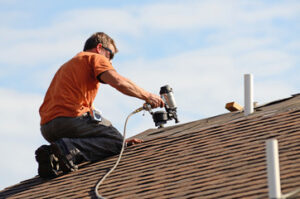
Many roofing materials are fire-rated, either based on their covering alone (Class A) or by assembly with a noncombustible material (Class A by design). Some also have an impact rating from Underwriters Laboratories (UL 2218). These ratings range from Class 1 to Class 4. Also, look for a roof with a vapor retarder.
As with any construction project, the right materials are crucial to ensuring that a structure will serve its intended purpose for a lengthy period of time. For roofing, this means that the material must be able to protect the structure from the elements while also complementing its architectural design and fitting in with its environment.
From the earliest structures to the most modern buildings, a variety of materials have been used as roofs. From rudimentary lattices of sticks and straw to stone slabs, these roofing materials offer varying levels of effective weatherproofing for specific lengths of time. A variety of factors must be considered in choosing roofing materials, including native climate, cost, endurance, and esthetics.
Wood shingles and shakes are traditional roofing options that create a classic look for your home. Shakes are produced by splitting wood into wedge-shaped pieces and have a more rustic appearance than shingles, which are manufactured through precise sawing. Both require regular maintenance to prevent rot, dryness, and moss growth.
Metal roofing has a long history and is available in many different types. Steel, aluminum, and copper are common metals used in roofing. Each offers a range of benefits, including durability, corrosion resistance, and heat reflection. The metals are typically finished with protective coatings to resist damage from the sun’s UV rays.
Synthetic roofing membranes offer several advantages over more traditional materials. These membranes are highly versatile, puncture-resistant, lightweight, and durable. They’re also resistant to chemicals and bacterial growth, making them an ideal option for structures with harsh environmental conditions.
The most popular residential roofing material is asphalt shingles. These are available in a variety of colors and styles, with a wide range of warranties and energy efficiency ratings. Depending on your location, you may need to choose impact-rated shingles that are designed to withstand severe weather conditions like hail and high winds.
Tiles are another common choice for roofing, with a variety of shapes and sizes. Traditionally, they’ve been made from clay or terracotta but are now available in a range of other materials, including granite and marble. Other tiles are constructed from concrete, while some are composites of both ceramic and fiberglass.
Installation
Roofing is not for everyone, and it takes a lot of work and a decent amount of physical strength. It’s also a dangerous job if you’re not comfortable working on high ladders. To avoid serious injury or even death, if you don’t feel comfortable performing this type of work, hire an expert.
During the installation process, it’s important to waterproof the valleys. These are the areas where your roof slopes meet and form a “V” shape. If not properly watertight, these areas can collect and cause leaks that eventually damage the side wall of your home. This can lead to rot, mildew, mold, lichens, and moss. To prevent this, underlayment and felt paper are installed in the same fashion as other sections of your roof.
Maintenance
Keeping the roof system properly maintained will extend the life of your building and reduce maintenance costs. Corrective procedures are relatively inexpensive and can prevent costly repairs to valuable interior contents caused by leaks and other damage.
During routine maintenance procedures, the roof membrane field is examined for evidence of physical damage and environmental deterioration, and necessary permanent corrective actions are implemented. It is generally recommended to make a housekeeping survey on most roof areas at least monthly. A typical survey includes:
Drainage System: Ensure that all drains, scuppers, and gutters are free of debris; this restricts drainage and accelerates the deterioration of the roof membrane. Trees should be trimmed as needed to eliminate accelerated surface erosion due to the wind-driven movement of branches. Cables, conduit, and pipes should be anchored to prevent movement on the roof surface.
Flashing: Replace or repair any flashing at penetrations and perimeter wall flashing. These areas are the most likely to develop leaks.
Water Testing: Test all interior water penetrations on a regular basis to prevent staining, mildew, fungus, and other problems caused by water leaks.
In most cases, housekeeping and minor preventive maintenance tasks can be performed by in-house staff members who are responsible for day-to-day building preventive maintenance duties. More specialized or extensive repairs, such as those required on roofs covered by an active warranty, are usually contracted to roofing professionals. A maintenance checklist should be tailored to the specific requirements of each roof and used for documentation of the condition of the roof system.
Repairs
It’s a good idea to make any minor repairs that can be done on the spot before they turn into major ones. A visit from a NY roofing contractor can catch things that would otherwise go undetected until it’s too late, like cracked ridge caps or worn-out shingle overlays.
A quick and inexpensive solution is re-roofing, which covers existing shingles without dismantling other components. However, this only masks problems and doesn’t last as long as a replacement.
Other repair options include replacing fascia and soffits, the horizontal boards that run under a roof overhang, and roof vents. These features are important for drainage and ventilation, so they need to be in good shape.
Another common repair is patching holes in a roof, which typically costs $100–$1,000 depending on the size and type of hole. Other less common repair options include replacing or repairing the ridge cap of a roof, which is made up of triangular pieces that cover the cracks in the roof’s surface. If this is damaged, water can leak into the underlying materials. Finally, a repair to sagging roof eaves is called roof tails, and it may involve repairing shingles, fascia, or trusses. It can cost $600 or more to replace a roof tail.
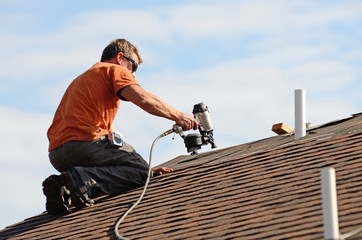





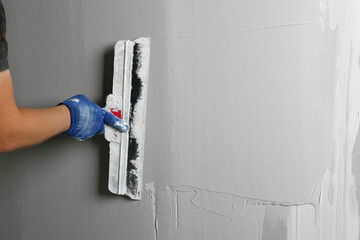
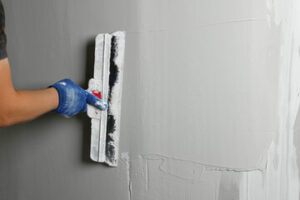
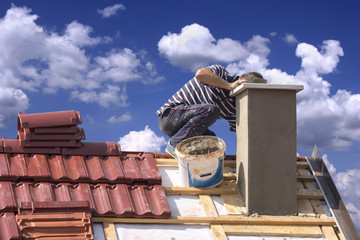
 Brick spalling is one of the earliest signs that your chimney structure needs repair. It can also be a very expensive issue to ignore. It exposes the porous nature of masonry and allows moisture to penetrate the underlying material. This can quickly lead to deterioration of the masonry and other materials like drywall, boards, and framework that support the chimney structure.
Brick spalling is one of the earliest signs that your chimney structure needs repair. It can also be a very expensive issue to ignore. It exposes the porous nature of masonry and allows moisture to penetrate the underlying material. This can quickly lead to deterioration of the masonry and other materials like drywall, boards, and framework that support the chimney structure.